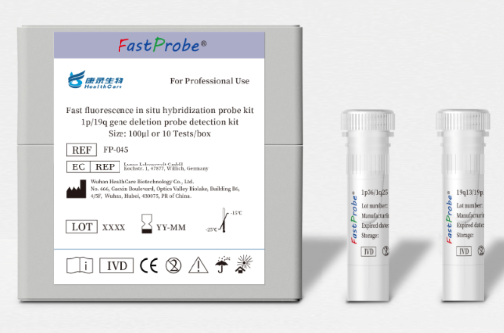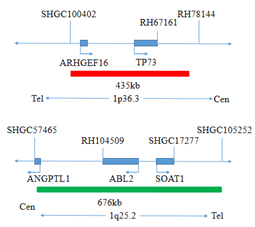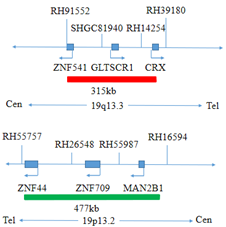IVD - FP045 1p/19q Gene Deletion Detection Probe Kit

Cat.# FP-045: 1p/19q Gene Deletion Detection Probe Kit (IVD)
[Overview]
Complete deletion of both the short arm of chromosome 1 (1p) and the long arm of chromosome 19 (19q) (1p/19q co-deletion) is the molecular genetic signature of oligodendrogliomas, a subtype of primary brain tumours accounting for approximately ten to fifteen percent of all diffuse gliomas in adults 1,2. The loss of one hybrid chromosome results in 1p and 19q loss of heterozygosity (LOH) 3. This molecular alteration is the result of an unbalanced whole-arm translocation between chromosomes 1 and 19 3 with the loss of the derivative t(1p;19q), which occurs early in the pathogenesis of oligodendrogliomas. Initially described in 1994 4, the biologic effect of 1p/19q co-deletion remains unclear. 1p/19q co-deletion is a valuable diagnostic, prognostic and predictive biomarker for the management of oligodendroglial tumours.


[Download] 1p/19q Gene Deletion Detection Probe Instructions
[Download MSDS] MSDS
References.
(1) Ostrom QT, Bauchet L, Davis FG, et al. The epidemiology of glioma in adults: a "state of the science" review. Neuro Oncol 2014; 16(7):896-913.
(2) Ibdaih A, Marie Y, Pierron G, et al. Two types of chromosome 1p losses with opposite significance in gliomas. Ann Neurol 2005; 58(3):483-7.
(3) Jenkins R, Blair H, Ballman K, et al. A t(1;19)(q10;p10) mediates the combined deletions of 1p and 19q and predicts a better prognosis of patients with oligodendroglioma. Cancer Res 2006; 66: 9852–61.
(4) Reifenberger J, Reifenberger G, Liu L, et al. Molecular genetic analysis of oligodendroglial tumors shows preferential allelic deletions on 19q and 1p. Am J Pathol 1994; 145:1175–90.

